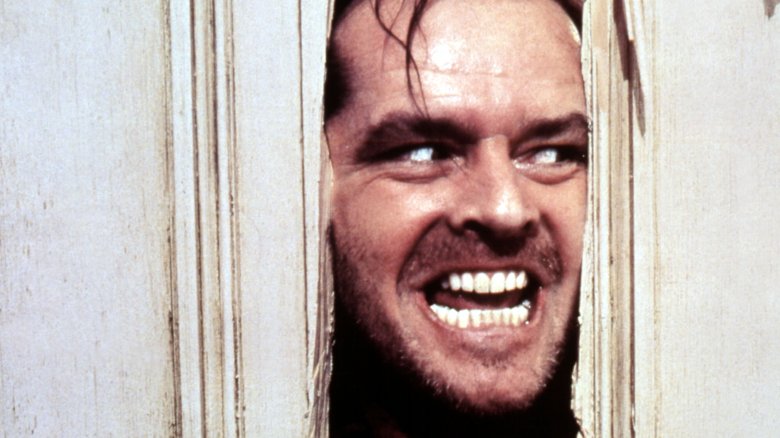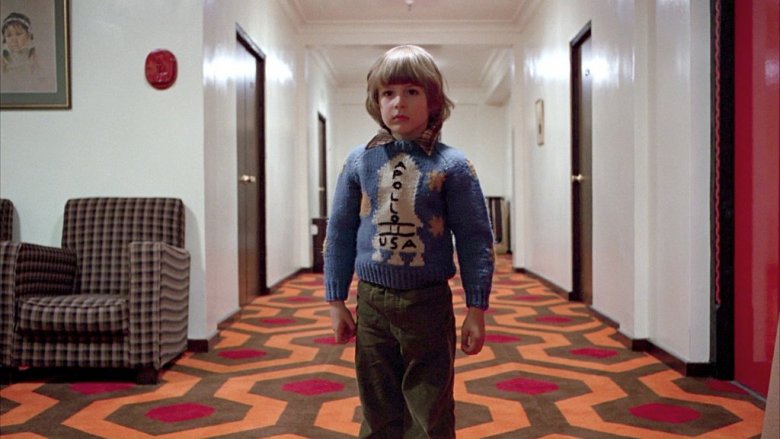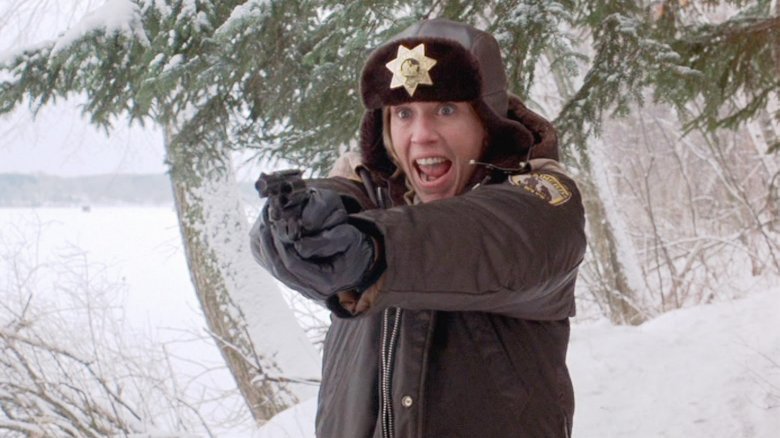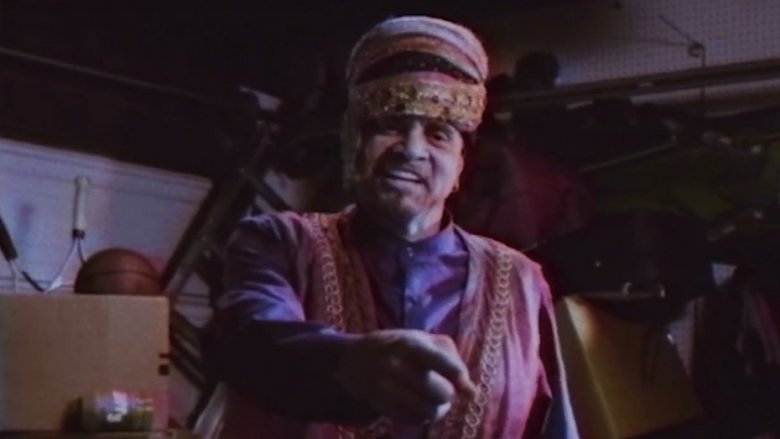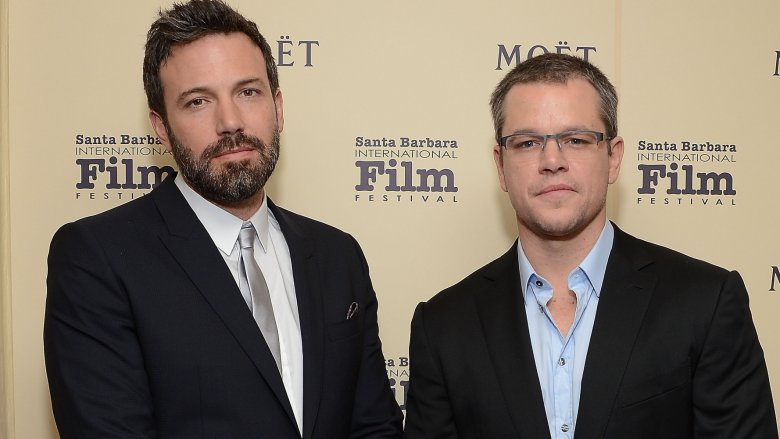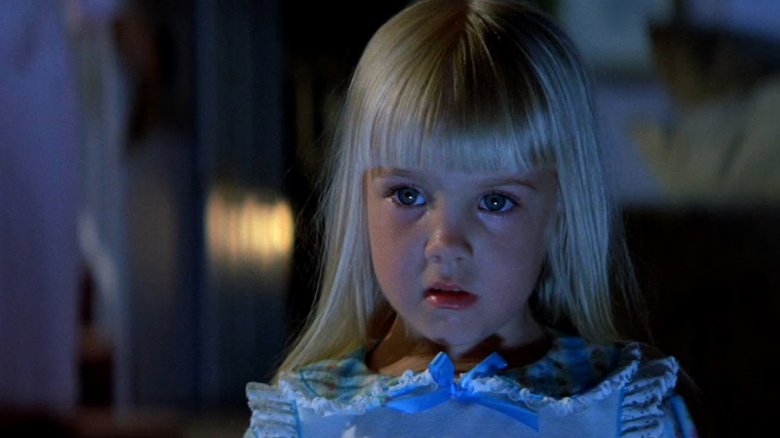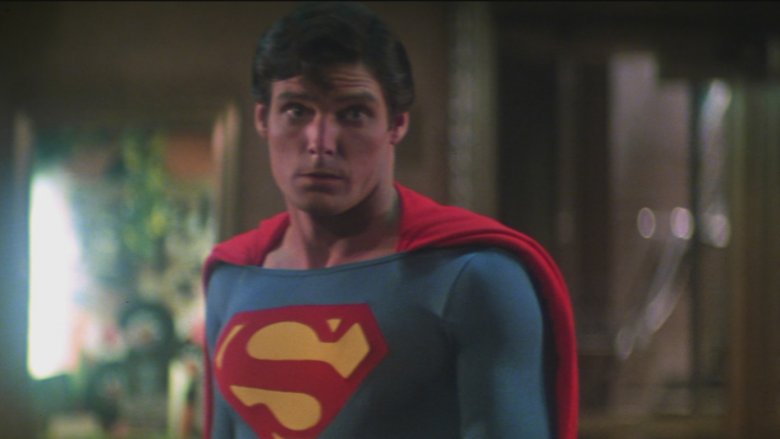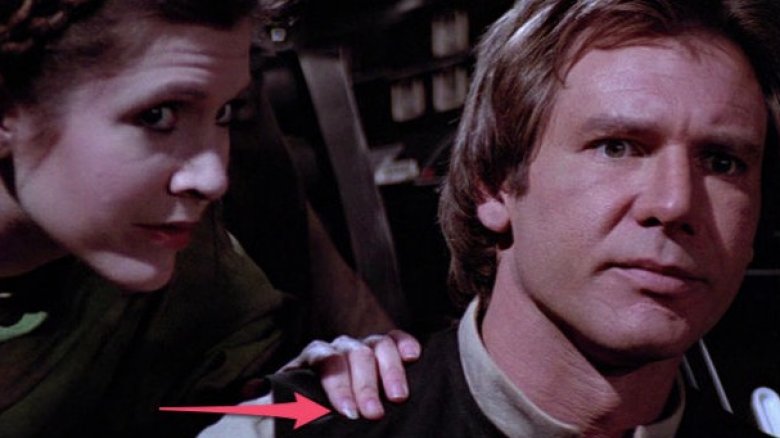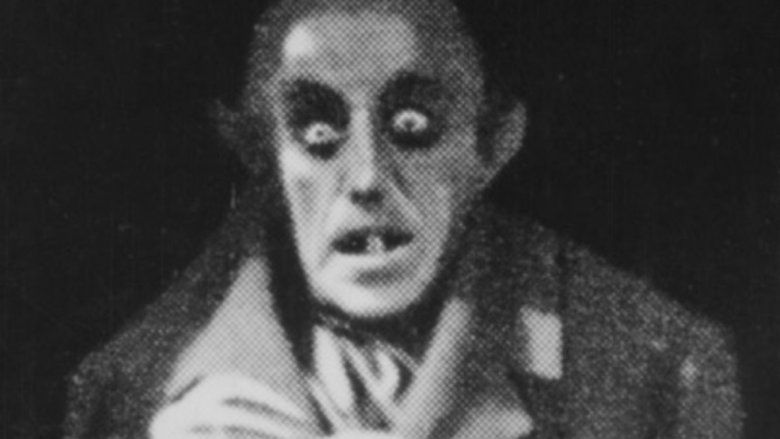Conspiracy Theories That Will Change The Way You Watch These Films
Movie-making is a mysterious process as arcane and confusing as wizardry. How a movie gets made and what goes on behind the closed doors of Hollywood can often be quite mysterious. So it isn't much of a stretch when a person starts to think there's more to our favorite films than meets the eye. From secret vampires to moon landing confessionals, here are some of our favorite movie conspiracies.
Kubrick faked the moon landing and The Shining is his confession
Stanley Kubrick is one of the most beloved auteurs of cinema, a director whose reputation has convinced millions of cinephiles that he controlled literally every single aspect of every single moment of his many movies. While "auteur theory" virtually ignores the contributions of the literal hundreds of other people that work on a movie set, that hasn't stopped audiences from poring over Kubrick's films for hidden clues that only a true genius would hide. According to a certain contingent of these fans, one of these clues could be a confession of guilt for helping to fake the moon landing.
The conspiracy goes that the famed moon landing video was actually recorded on a sound stage by Stanley Kubrick, who got the job for his excellent work on 2001: A Space Odyssey. (This is, of course, completely crazy.) Supposedly, though Kubrick excelled at the video, the fact that he couldn't share his masterpiece bothered him so much that he hid clues to it throughout another of his masterpieces, The Shining.
Conspiracists point to Danny's rocket ship sweater, the use of "Room 237" as a stand-in for the distance from Earth to the Moon (though it's not 237,000 miles, it's 382,500 miles), and a handful of other coincidences or willful misreadings. The Shining might be one of the best horror movies ever made, but the thought that Neil Armstrong has been lying to the American public for decades is too scary even for the movie. Even among the other bizarre readings of the film featured in Room 237, this one stands out as fairly misguided.
A woman believed Fargo was a true story and died searching for the missing treasure
Fargo famously starts with: "THIS IS A TRUE STORY. The events depicted in this film took place in Minnesota in 1987. At the request of the survivors, the names have been changed. Out of respect for the dead, the rest has been told exactly as it occurred." Of course, that's more of an artistic flourish, since the entire film is decidedly not a true story, but that didn't stop plenty of viewers from taking the statement at face value.
One conspiracy theory alleges that a Japanese woman believed the story so completely that she went to Fargo, North Dakota, in search of the millions of dollars buried in the snow by Steve Buscemi's Carl Showalter character. The conspiracy alleges that the woman became obsessed with finding the buried millions and tragically died while digging. It's a story that's pretty easy to believe since there's no reason not to think that a suitcase of money is buried somewhere in the snow-covered fields of North Dakota.
Unfortunately, the truth of the matter is that while a Japanese woman did tragically die in the snowy fields of Fargo, it wasn't because she was looking for buried treasure. Rather, she was visiting Fargo following a depressive spell because it was a place she had visited with her lover, and her death was ruled a suicide. Of course, that didn't stop another movie from getting made that told the story of the disproven urban legend. Truth may be stranger than fiction, but fiction tends to last a bit longer in the retelling.
A munchkin killed himself on the set of The Wizard of Oz
It's hard to think of a movie that better exemplifies Old Hollywood than The Wizard of Oz. Filmed in glorious technicolor, the film adapted one of the most beloved fantasy franchise book series of all time and rocketed the already successful (at only 17 years old) Judy Garland to even more colossal fame. It makes sense then that fans have combed the movie for dark behind-the-scenes stories, if only to contrast with the glitz and glamour of the movie. While an uncomfortable number of these stories involve Garland's constant mistreatment (which wasn't so much a conspiracy theory as much as just a sadly commonplace occurrence in Hollywood's bygone era), the most widely reported conspiracy is that a certain scene in the movie shows a dwarf swinging from a noose in the background.
While it's easy to see why the theory caught on (What better way to make a family-friendly, feel-good movie dark then alleging an on-set suicide?), the truth is much less macabre. The scene in question does show a dark shape that appears to be swinging back and forth in the woods behind the characters, but the idea that a suicide on set could be ignored by the dozens of performers and stagehands involved with the production is ludicrous. While some fans wanted to believe it was a dwarf brought to his end after being rejected by his lady love, the truth is that it was more likely a bird or prop of some sort.
Kazaam is one of two nearly identical genie movies - the other is Sinbad's Shazaam (and isn't real)
Kazaam, the Shaquille O'Neal vehicle in which he plays a wish-granting genie, is not exactly well-remembered. Strangely, Shazaam, a Sinbad vehicle in which he plays a wish-granting genie, is much more beloved. The strange part is that the latter movie doesn't exist. According to proponents of this conspiracy theory, Kazaam and Shazaam were two competing genie movies released within the same year (much like Deep Impact and Armageddon) and that Shazaam was so disliked that everyone involved simply denies that it ever existed.
There are a couple of issues with this conspiracy theory, but one of the biggest is that it is extremely hard to hide the existence of an entire movie when internet databases like IMDb and Wikipedia exist. Nevertheless, proponents of the theory argue, there's a very convincing explanation for why no one has any record of Shazaam existing: It's a product of an alternate universe that fans of the movie remember because they themselves are from that original universe.
This type of thinking is called "The Mandela Effect," named after a contingent of people that staunchly believe that Nelson Mandela died in prison (he didn't). Rather than accept that their memory is faulty, proponents of these facts argue that it's proof of a glitch in the mainframe of the world or that they are remembering alternate universes. While this sounds insane, the fervent belief in the movie did lead to a kind of Shazaam movie getting called into existence. Faith breeds miracles, we suppose.
Ben Affleck and Matt Damon didn't write Good Will Hunting
Ben Affleck and Matt Damon have been A-list movie stars for decades at this point, but they rocketed to prominence in the nineties as the writers of the oscar-award winning movie Good Will Hunting. While Robin Williams deserves a lion's share of the credit for his excellent performance, it's an undeniable fact that the screenplay seemed to come out of nowhere, written by two guys as far away from the Hollywood "in-crowd" as it was possible to be. While the narrative of two Bostonian boys from the wrong side of the tracks hitting it big with a screenplay certainly wouldn't hurt their chances at Hollywood success, some suspicious viewers have pointed out that Damon and Affleck have spent the rest of their careers turning predominantly toward directing and acting, with less of a focus on screenplays.
Conspiracists allege that the Boston boys stole the screenplay from a better-known writer (William Goldman and Kevin Smith were popular guesses) or were encouraged to take credit for the script so that the movie could ride a wave of momentum into Oscar season. It's a compelling theory, since you would think that Affleck and Damon would write more screenplays considering their initial success. Ultimately though, the idea that they stole the script can be traced almost entirely to a Variety article that alleged that the script was written by someone else. At this point, we'll just have to trust that the credits for Good Will Hunting are the best answer to the question of who wrote the movie.
Nicolas Cage is a vampire
Nicolas Cage is a strange man, and we're certainly not denying that. His performances in Bad Lieutenant: Port Of Call New Orleans and The Wicker Man seem to position him as a Gary Busey-esque dynamo of energetic performances, but he's likewise proved his star power in films like The Rock and Con Air. He's an enigma of a man, equal parts ironic joke and genuine A-list actor. The only thing that could make him more mysterious is if he was some sort of supernatural entity, like a vampire or a werewolf.
Luckily for the purposes of this article, Nicholas Cage has 100% been accused of being an immortal vampire. The evidence comes from a picture from 1870 that does bear an uncanny resemblance to the actor, with conspiracists alleging that "Nicolas Cage" is only the latest in a long line of pseudonyms used by the vampire when he wants to engage with the world. While these kinds of conspiracies are surprisingly common, Cage's case takes the cake for his absolutely bizarre response when asked about it on David Letterman's CBS show. Rather than laughing it off as you might expect, Cage gets surprisingly serious, saying "There's a photograph of me, and you can't take pictures of vampires...Now look, I don't drink blood, and the last time I looked in the mirror I had a reflection." That's a strange response there, Nicholas Cage. It's almost like you're trying to convince people that you're not what you actually are. This might be one conspiracy we find pretty believable.
Everyone who starred in the Poltergeist movies has died
You've got to be a hearty sort to make horror movies; making a movie of the things that go bump in the night isn't for the superstitious and supernaturally averse, so it's no wonder then that certain movies (especially horror movies) develop the reputation of a "curse." When it comes to curses, you can't get more fertile ground than a native american graveyard on the set of Poltergeist. Well, that's not quite right—while the film's concept alleges that the titular poltergeist is the work of a haunted native american resting place, the actual "curse" that supposedly killed half a dozen cast members has a much more mundane explanation.
The most shocking deaths, Dominique Dunne and Heather O'Rourke, were tragedies that seemed to come out of nowhere. Dunne was a young woman in the prime of her life who was killed by a jealous ex-boyfriend, while O'Rourke was only 12 years old when she died of septic shock—in a turn from what was thought to be the flu—which surprised everyone. While the deaths were tragic, they don't correlate with a curse, especially when the other unfortunate deaths related to the Poltergeist cast were elder actors who were more susceptible to unfortunate illnesses. The other most well-known deaths were the actors who played the good and evil spirits, Will Sampson and Julian Beck, who both died of complications related to illnesses both were being treated for. In the end, the only real curse was the curse of preventable medicine being unable to save several of these actors' lives.
The Superman Curse
Speaking of curses, it's not just the horror movies that gain a reputation for causing misfortune to those unlucky enough to adapt their stories. That bastion of "Truth, Justice, and the American Way" himself, Superman, has gained the reputation of a disastrous curse related to TV and movie adaptations. The origins of the curse can usually be traced to the tragic (and controversial) suicide of George Reeves years after his role as Superman on The Adventures of Superman. Proponents of the curse usually add Christopher Reeve (best known for his star turn in Superman: The Movie) and his unfortunate equestrian accident which led to him being paralyzed from the neck down. Even Lee Quigley, who played the baby Superman in Superman: The Movie, gets thrown in with his early end from solvent abuse.
It's a series of unlucky coincidences that seems to affect even those cast members who don't have the initial luck to play Clark Kent and his superhuman alter ego. Proponents of the curse have added Margot Kidder's battle with bipolar disorder and even Richard Pryor's diagnosis of Multiple Sclerosis. While it's a frightening list to read over, the ultimate truth is that misfortune affects everyone, even the rich and famous, and the existence of a "curse" lets fans blame something concrete rather than admit to apophenia.
Carrie Fisher sports a coke-nail on-screen in Return of the Jedi
Star Wars: A New Hope might have been a movie that the majority of the cast had little faith in, but by the time Empire Strikes Back rolled around, the cast understood how big of a deal the franchise had become. Harrison Ford and Carrie Fisher famously had some likely R-rated revelries, and the rest of the cast's experiences don't seem to be any more G-rated. Fans have searched through the films for clues to the behind-the-scenes shenanigans, from laughing at the Cantina band's style of music receiving the appellation "Jizz" to Carrie Fisher's slightly-too-long nail line in Return of the Jedi "proving" to fans that she did cocaine on set.
Fisher, of course, was never one to shy away from a rumor, or have shame about her past experiences. She debunked the rumor herself on Twitter, responding to an article drawing attention to her longer nail by saying, "I never used my fingernail for drugs. I used dollars or tiny spoons like any other respectable former drug addict." The Star Wars films might have been a non-stop party behind the scenes, but fans will have to comb through the films a while longer to find proof that the party bled into the finished product.
Max Schreck was an actual vampire
Nosferatu set the gold standard for horror films for decades (and arguably even centuries) with a German Expressionist twist on the classic Dracula story. The stark black-and-white cinematography and stripped-down storytelling were terrifying in their own right, but it was Max Schreck's horrifying performance as Count Orlok that keeps the film as scary now as it was the year it was released. Schreck's presence is otherworldly, a cold, sinister monster that seems descended from rats rather than from man. When he rises from the coffin in a famous scene, it's almost impossible not to feel as if you're watching an otherworldly monster caught on film.
It's no wonder then that a not insignificant number of viewers watching the film began to suspect that Schreck was himself some sort of vampire or other monster. His relative obscurity both before and after the film only fueled the flames of belief that this man (monster?) came out of the mists of primitive Eastern Europe to be filmed before disappearing back into the darkness.
However, despite a later film making a story out of the idea, Schreck was not a vampire but just an actor at a time that it was difficult to keep records. Add in the fact that Nosferatu was sued into cult classic status after Bram Stoker's widow pressed charges for plagiarism, and Schreck's relative obscurity starts to make a lot more sense logically. Schreck himself continued to act in other films afterwards, although none would reach the artistic peak of Nosferatu, and it became easier for proponents of the conspiracy to simply ignore those later works. Still, rewatching Nosferatu with the possibility of a supernatural secret certainly makes the film even scarier, hard as it may be to believe the film can get any scarier.
